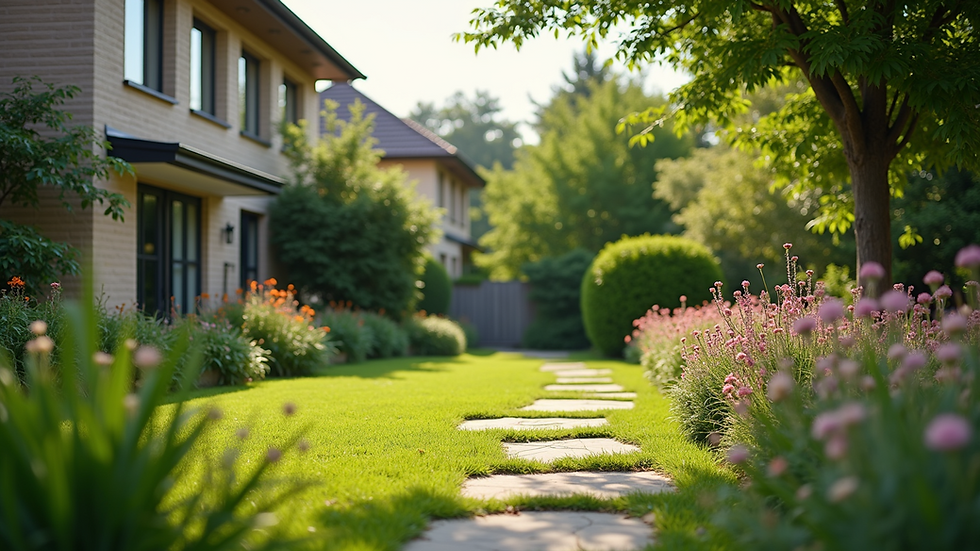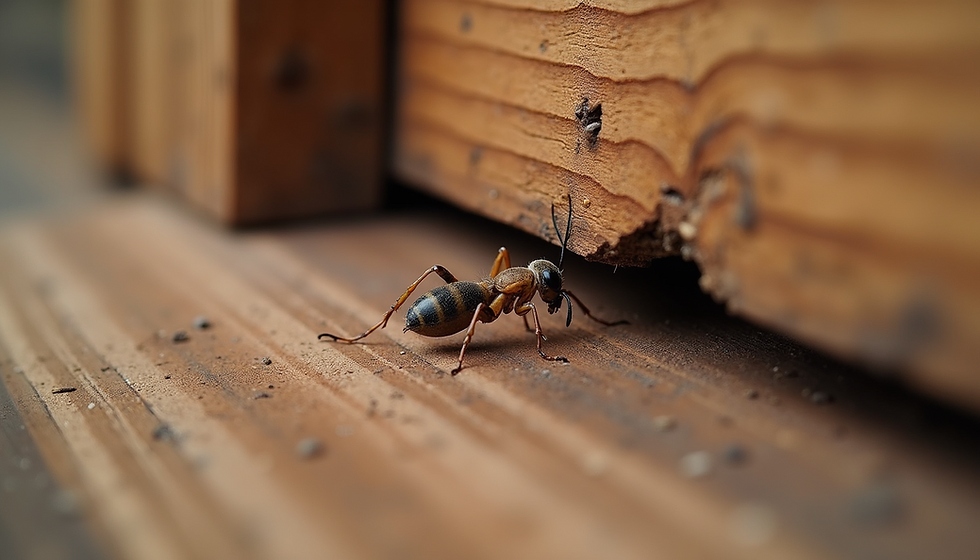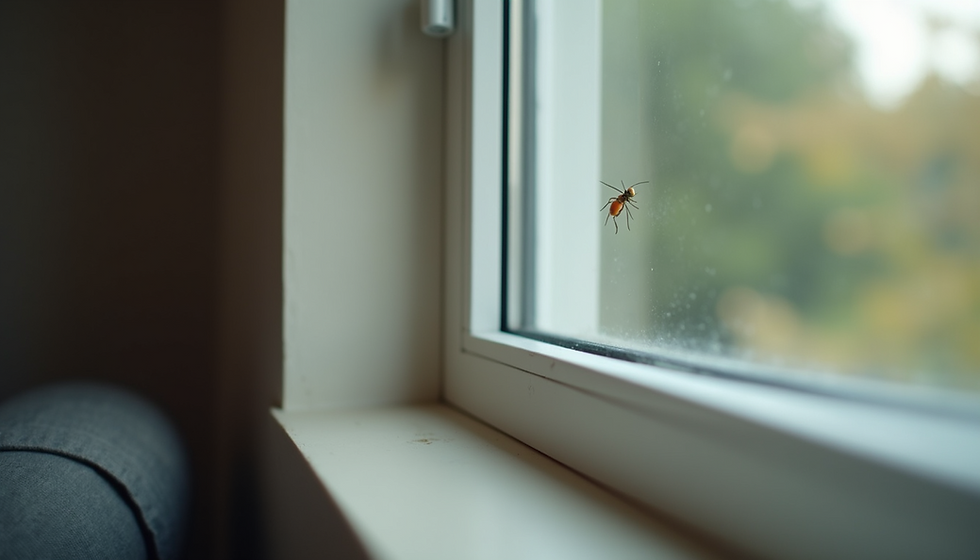Protecting Your Home from Unwanted Pests
- Gorilla Pest

- Jul 1
- 4 min read
Pests can be one of the most troubling aspects of homeownership. From tiny ants to larger rodents, unwanted pests can invade your living space and wreak havoc. Understanding how to protect your home from these invaders is essential to maintaining a clean, safe, and comfortable environment. This blog aims to help you identify common household pests, how to prevent their invasion, and what to do if you already have a problem.
Understanding Your Home's Vulnerabilities to Residential Pests
Every home has its vulnerabilities which pests can exploit. Structural weaknesses, gaps, and poor maintenance can create paths for pests to enter. For instance, cracked window screens or gaps in door frames are easy entry points for insects. Additionally, areas like attics, basements, and crawl spaces may provide the dark, damp environments that many pests find irresistible.
To fortify your home against pests, start by inspecting these vulnerable areas:
Windows and Doors: Ensure all openings are fitted with screens and are well-sealed.
Foundation and Basement: Look for cracks or gaps that might allow pests access to your home.
Cupboards and Pantries: Regularly check these spaces, as they often attract pests searching for food.

Importance of Regular Maintenance in Residential Pest Control
Maintaining your home is not just about aesthetics; it plays a crucial role in pest prevention. Regularly scheduled maintenance can identify and rectify potential pest problems before they become serious issues. Here are some tips to include in your home maintenance routine:
Clean Regularly: Keeping your home clean removes food sources for pests. Regularly vacuum and wipe down surfaces, especially in kitchens and dining areas.
Manage Waste: Make sure that trash is disposed of properly and keep garbage bins closed. Poor waste management can attract pests.
Inspect Outdoor Areas: Take a look at your yard and garden. Overgrown shrubs and piles of debris can offer habitats for pests. Trim back any overgrowth and tidy up your outdoor space.
Implementing these maintenance tips will set the foundation for effective residential pest management.

What is Residential Pest Control?
Residential pest control refers to the strategies and practices used to manage and eliminate pests in home environments. This can involve proactive measures such as regular inspections, preventive treatments, and responsive actions when pests are spotted.
Key Services in Residential Pest Control Include:
Inspections: Regular inspections help to catch pest problems early.
Treatments: Professional pest control services may include treatment options such as baits, traps, and sprays specifically designed for residential use.
Education: Pest control services often educate homeowners on best practices to prevent infestations.
Research shows that homes that utilize professional pest control services experience fewer infestations. Rather than waiting until an issue arises, consider engaging with specialists early on to safeguard your home's integrity.
Tips for Homeowners to Prevent Pest Infestation
As a homeowner, taking proactive measures can significantly reduce the risk of pest infestation. Here are effective strategies to consider:
Seal Entry Points: Use caulk or other sealants to close off potential entrances in your home.
Store Food Properly: Always use airtight containers for food storage to prevent attracting pests.
Eliminate Standing Water: Stagnant water provides necessary hydration for pests. Properly manage water sources in and around your home.
Landscaping Choices: Use pest-resistant plants in your landscaping plans. Certain plants can naturally repel pests.
By putting these tips into practice, you establish a hostile environment for unwanted pests.

What to Do If You Already Have a Pest Problem
If pests have already invaded your home, quick action is required to prevent further issues. Here are steps to take:
Identify the Pest: Knowing what type of pest you are dealing with can help determine the best course of action. Research online or consult with a pest control expert.
Contain the Problem: If possible, contain the pests to one area of your home. This prevents them from spreading further.
Seek Professional Help: Don’t hesitate to reach out to a pest control professional. Services like Gorilla Pest Control provide tailored solutions, helping manage your specific pest issue effectively. For more details, visit residential pest management.
Follow Up: After treatment, continue to monitor your home and address any re-emerging issues. This may involve repeating treatments or making further adjustments to your pest prevention strategies.
Properly managing an existing pest problem can lead to a pest-free environment once again.
Creating a Pest Prevention Plan for Your Home
To ensure your home remains pest-free, consider creating a comprehensive pest prevention plan. This plan should include a combination of practices targeted at maintaining cleanliness and structure integrity:
Schedule Regular Inspections: Have a pest control service inspect your home periodically to identify potential pest issues early.
Educate Yourself: Read up on common pests in your area and learn how to spot early warning signs of infestation.
Use Green Pest Control Methods: Explore eco-friendly pest control options that minimize harm to the environment.
By implementing a proactive approach, you'll not only protect your property but also maintain a welcoming, healthy home for your family.
In summary, taking steps to protect your home from unwanted pests involves understanding vulnerabilities, conducting regular maintenance, and establishing a solid prevention plan. Combining good practices with professional help ensures that your residence remains a safe haven, free from pests.


